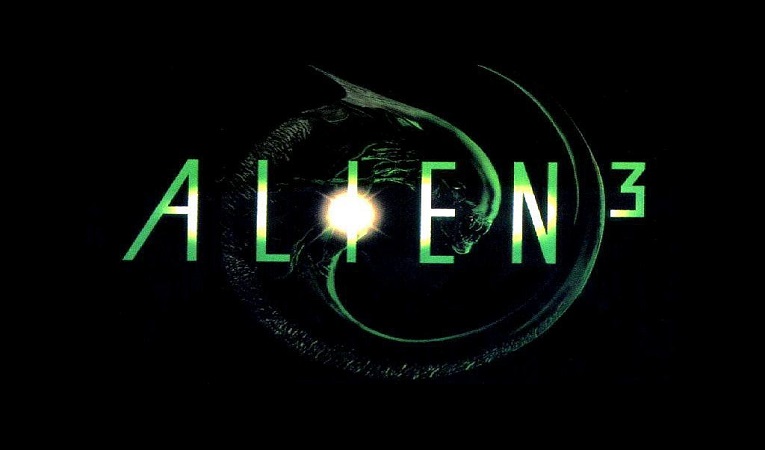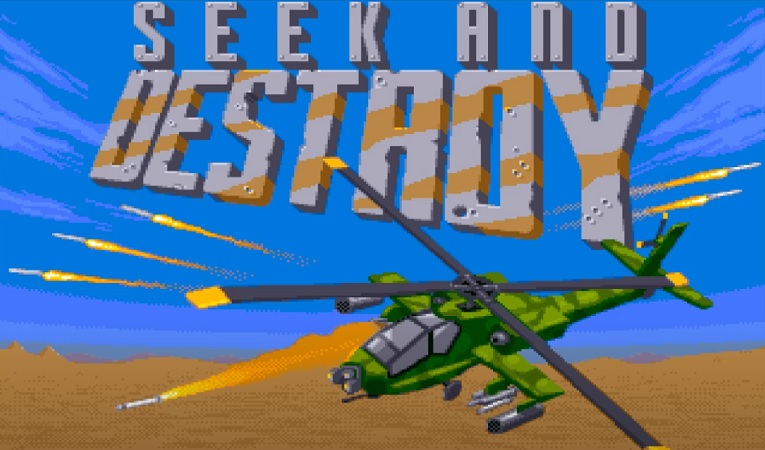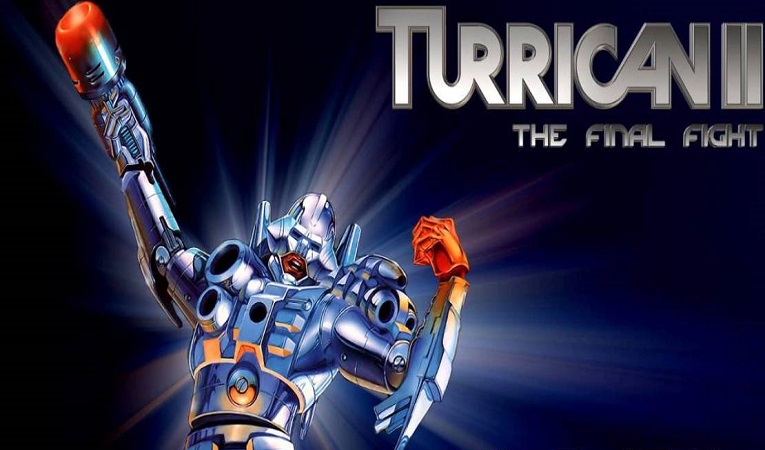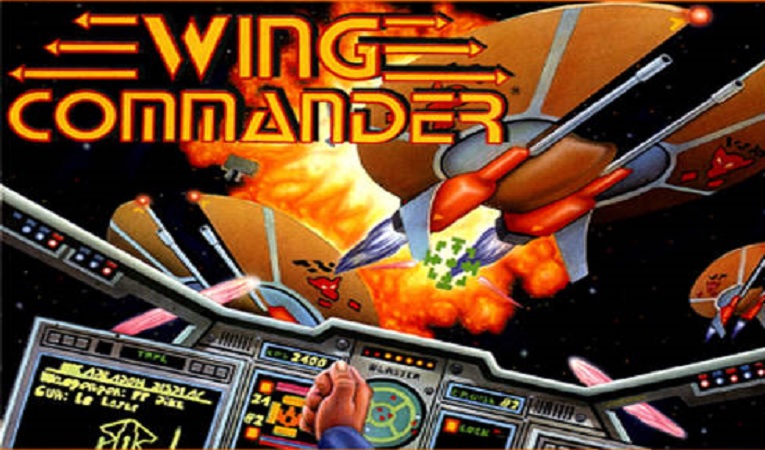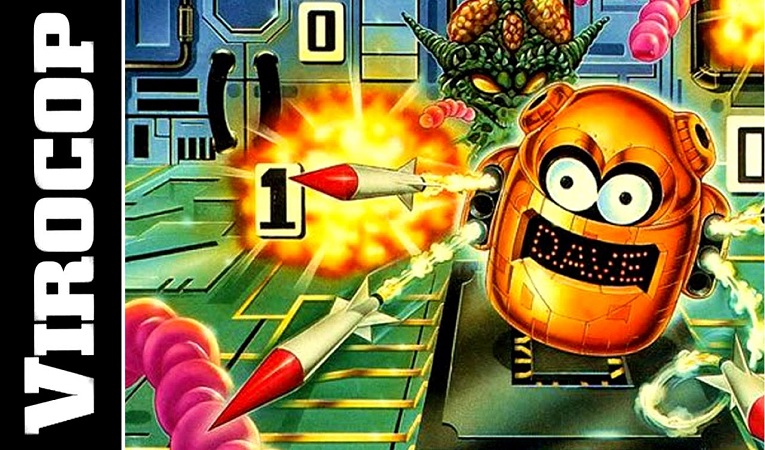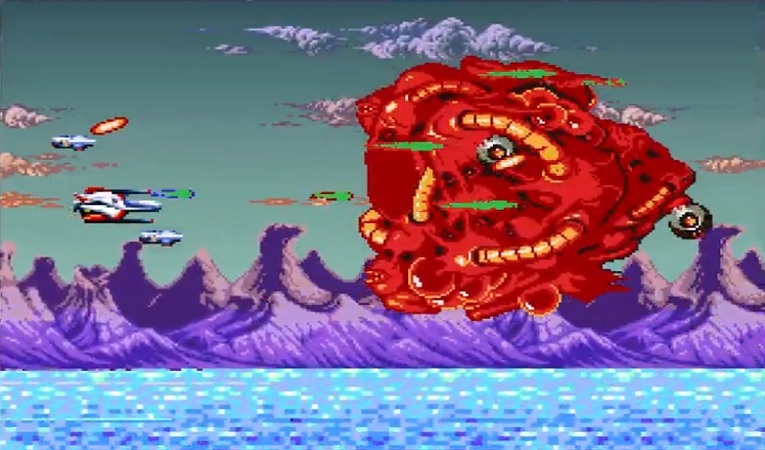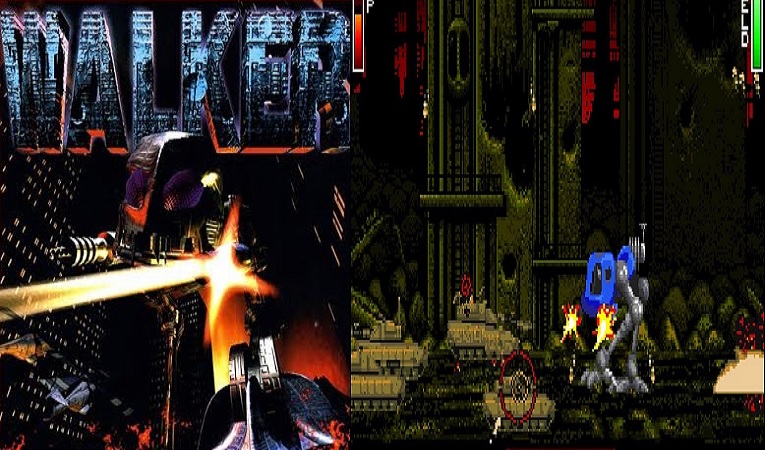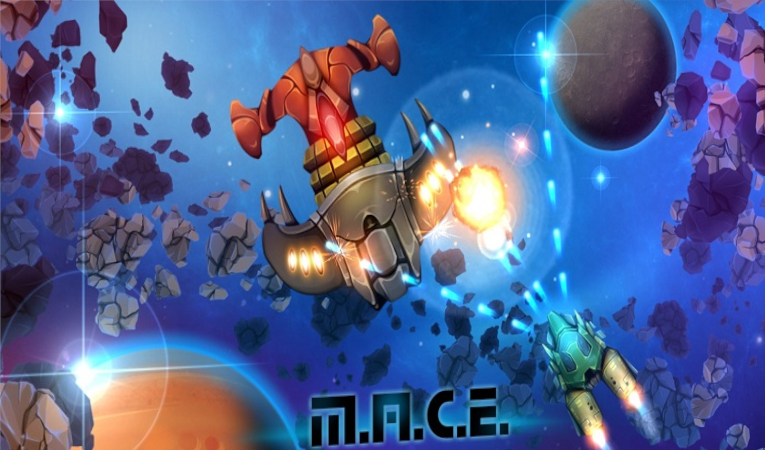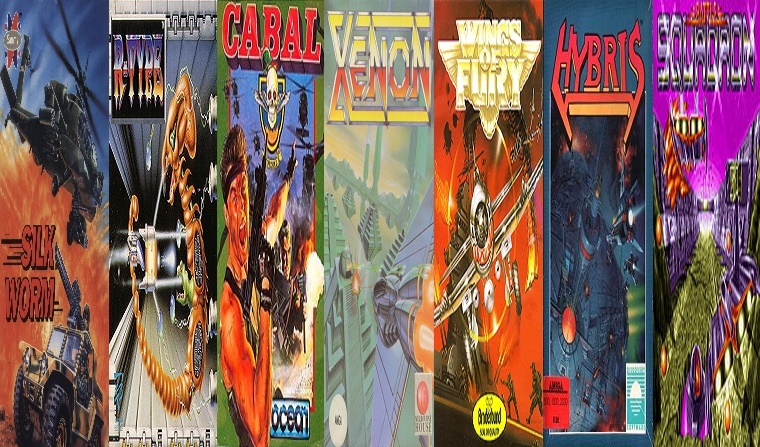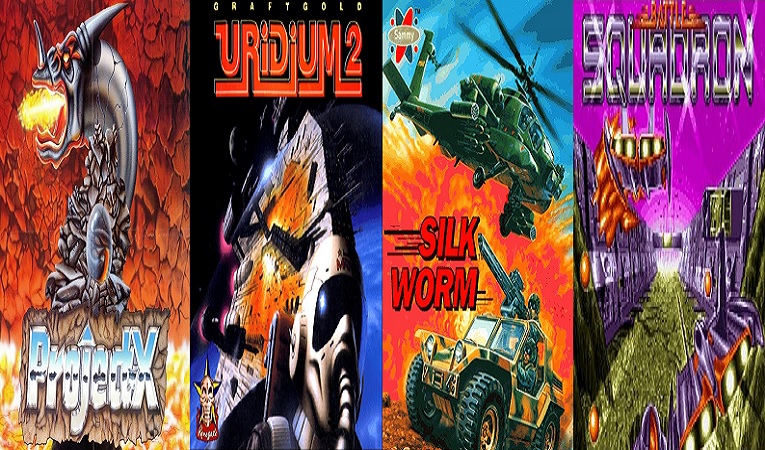
The Commodore Amiga was one of the greatest computer platforms in the ’80s and early ’90s. When released the Commodore Amiga attracted the best game developers and publishers of its time. The Commodore Amiga 500, is the first low-end Commodore Amiga 16/32-bit multimedia home/personal computer. It was announced at the winter Consumer Electronics Show in January 1987 and competed directly against the Atari 520ST. Although popular with hobbyists, arguably its most widespread use was as a gaming machine, where its advanced graphics and sound were of significant benefit. Over 6 million Commodore Amiga 500 computers were sold worldwide.

Power-ups are the heart of a good shoot ’em up, and Agony has them in spades. Periodically, icons tumble across the screen, and quick joystick-wiggling allows Alestes to swoop down to collect them. There are three types of bonus items: protective swords, potions to increase firepower, and scrolls which provide assorted effects. To use them later, the firebutton should be depressed to reveal the list of scrolls held. Using spells at the right time can have a devastating effect on the bad guys, especially the end-of-level nasties which make their obligatory appearance. Agony boasts seventeen tunes altogether, and if you’d expected the usual bombastic drivel normally associated with shoot ’em ups, you’ll be pleasantly surprised. Actually, the music seems inspired by South American folk music, with haunting pipe sounds complementing the action perfectly.
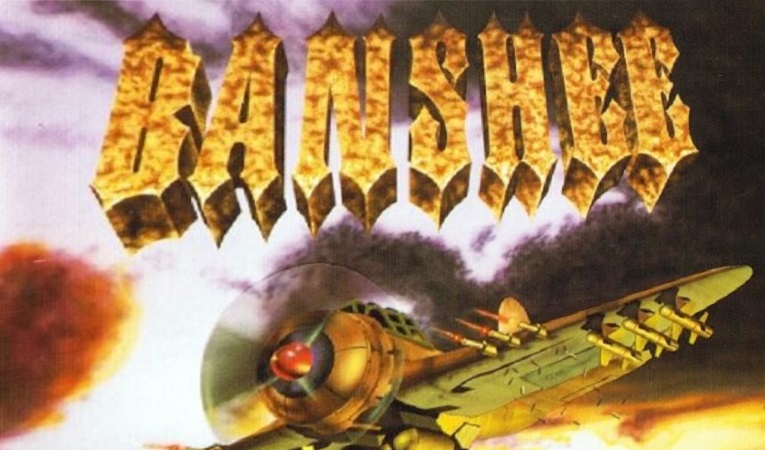
Set over four levels with increasing difficulty, Banshee starts out over the familiar 1942 landscape of sea and beaches, but soon evolves into towns and cities, deserts, snow scapes, swamps and eventually a hi tech warzone where everything is thrown at you. Of course you are attacked every step of the way, and every so often you have to fight a bad guy who is not only much larger than you, but also takes considerably more hits than you to destroy. Killing some enemies leaves behind floating icons that can be collected and used to increase your weapons capabilities from a simple forward firing cannon to eight-way missiles, homing bullets and smart bombs. Still, there’s some plot to keep you lot happy. The year is 1999, and no world wars have ever taken place. Mankind has evolved and developed along a completely different thread, and now we have finally reached a state of war. Unfortunately, technology is still quite primitive, and not many people are actually that skilled at fighting. Enter you, ace pilot extraordinaire to save the day, or not as the case may be.
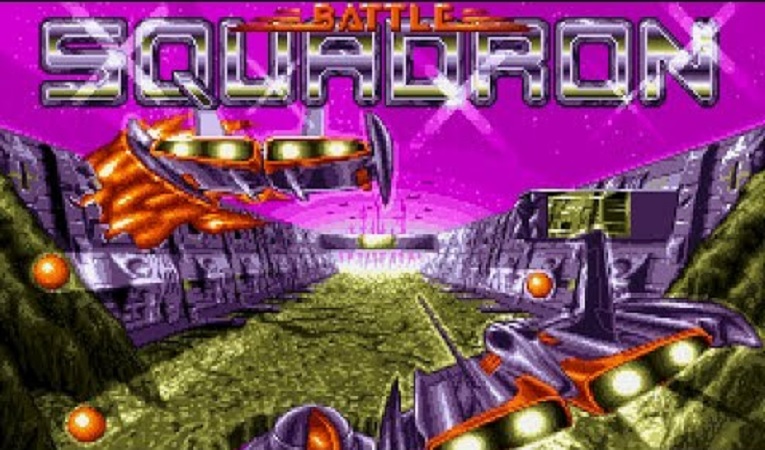
In Battle Squadron you start with a small laser and three smart bombs. Shoot aliens, collect pods, and enhance your weapons. The weapons range from a standard laser, through multiple firing to side and diagonal blasts, with increasing power levels. Further on up the level Enter Here signs appear, allowing access to the planet’s core, and ultimately the guardian. In the instructions you are advised to remain top-side until you’ve built up your ship’s weapons. Sound advice, for once you’re inside the planet the aliens seem to be a lot larger and tougher to kill. And just when you thought you’d trashed the guardian you realise it wasn’t him at all, just something big that happened to be in the way. Battle Squadron relies on one thing to make it a good game – fun.
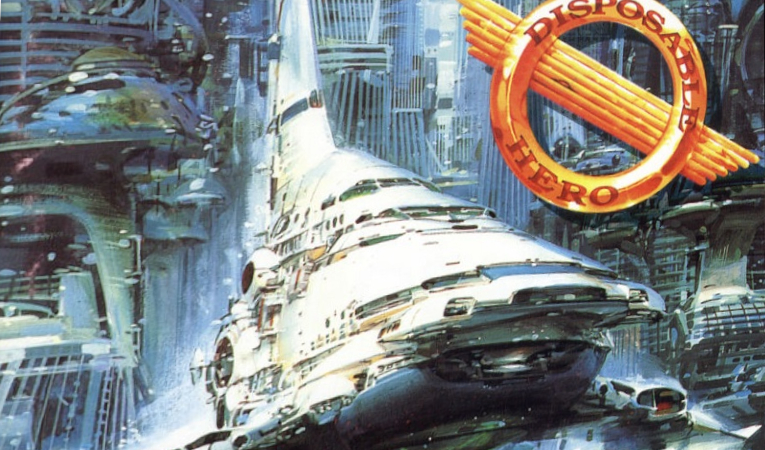
The graphics in Disposable Hero are fabulously detailed. Enemy ships actually look battle scarred and possess little animated bits of machinery on their surfaces that twist or click as they speed towards you. The secret of success is in the various pods/domes you will find. They hide shops where you can stock up on weapons. Your ship will only carry so much though, and certain combinations will not do, so cunning choices have to be made to stay in the game. There is a total of 32 weapons to choose from but you do not have instant access to them all. Scattered throughout the hostile enemy levels you will find various bonus pods that have to be collected to buy better equipment.
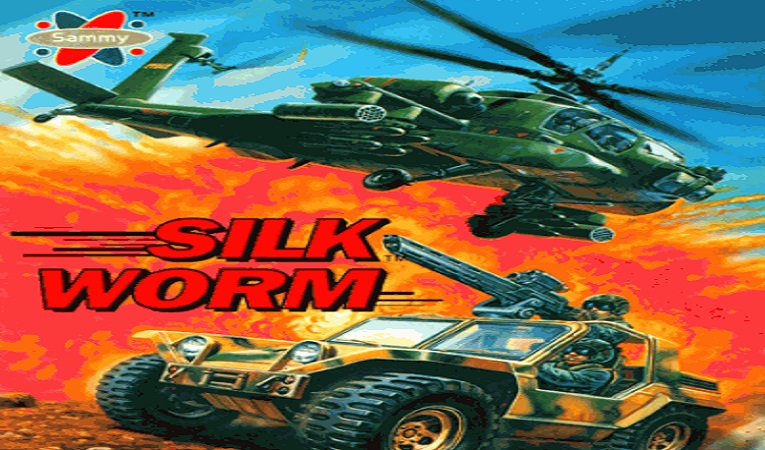
Silkworm is one of those arcade games where you see it and think, ‘oh, it’s just a shooting helicopter game’, but you soon get gripped by the frenzied blasting action and atmospheric graphics. irst of all, the action takes place in the mountains, where small helicopters and ground based missile launchers attempt to blow you out of the sky. No problem – you and your mate just blow them away, picking up the energy emitted by the exploded mines to use as shielding, or shooting it to cause a smart-bomb effect. However, when some bits of helicopter drigt in and form a large ABC Warriors type gunship, the tension mounts. A few well-placed blasts soon destroy it and a pod appears. You pick it up and find an extra barrel auto-mounted on your front-cannon. The programmers have done a remarkable job on the home versions graphics, coaxing the utmost out of both machines to portray the action to the best effect. In fact, I’d say that some of the graphic effects on the Amiga are better than the coin-op!
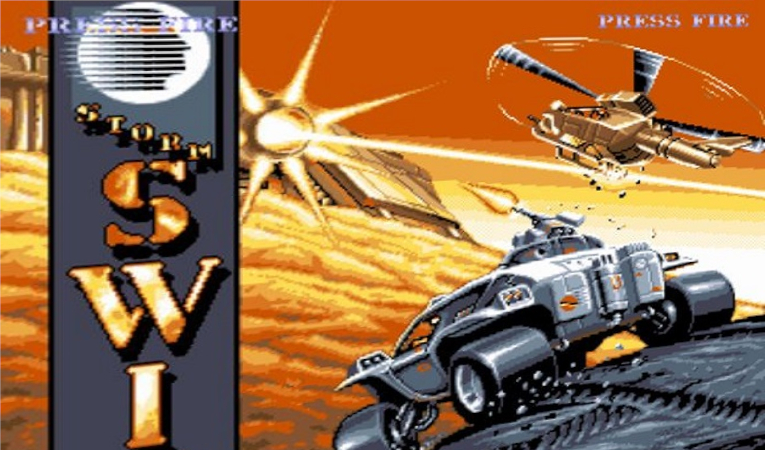
SWIV works best with a partner. Player one controls a helicopter, while number two runs around the screen in a tank. Each vehicle comes with its own set of advantages and disadvantages. The helicopter doesn’t have to worry about crashing into ground targets, but it can only fire in one direction. The tank, however, is the complete opposite. A rotatable turret allows you a shoot in a 360 degrees arc, but has plenty of buildings and gun emplacements to avoid. It’s the clever technical features that you don’t instantly notice which really make the difference. All sprites and background graphics are loaded in while you play. This means there’s no loading between levels, so you can go from start to finish without stopping. Clever sprite routines are used giving dozens of enemy craft on screen without the game slowing down. It’s these tricks that give SWIV a genuine arcade feel.
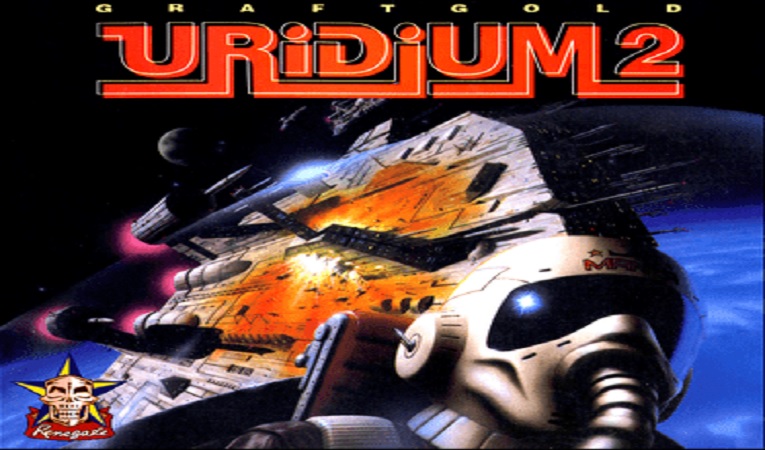
Uridium 2 will please a lot of shoot-’em-up fans. It’s fast and furious and you do get to shoot loads of things in a vicious psychopathic kinda way. The graphics are very nice indeed, especially when you consider the minute size of them. You pilot a Manta spacecraft and fly over huge alien dreadnoughts. Your job? To completely obliterate them. You have to attack all aerial and ground targets and locate the master runaway. Once you’ve located and landed on the runway, you are transported down into the dreadnought main generator chamber. The dreadnought is already severely damaged, but it can only be destroyed by blowing up the reactor core. Once destroyed, you will progress to the next level.
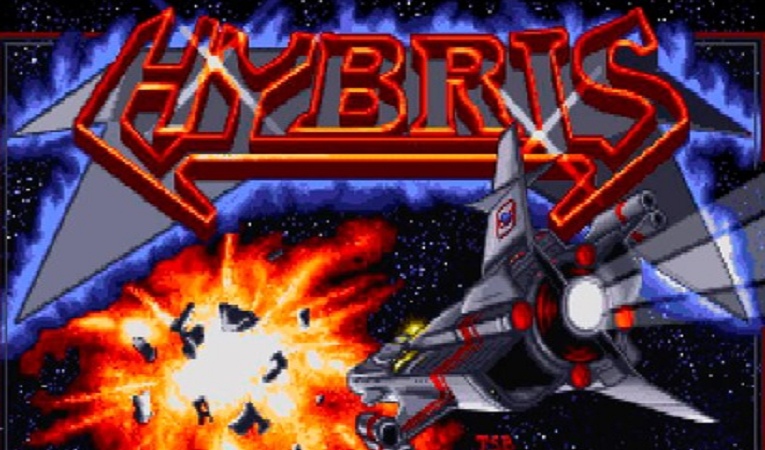
In Hybris the action is typical of the top to bottom scrolling type. The player flies in all four directions shooting wave after wave of advancing aliens and ground installations. Extra weapons are available along the way by collecting icons which appear from time to time. With wave after wave of alien invaders looking like something of Doctor Who dancing the poas-de-deux, it’s pretty easy to forget about those missing guys and their tax bill. With your quest taking you across deserts, roads, mountains and seas and with one alien after another on your tail you can be sure that it isn’t going to be a sightseeing trip. When aliens rear their head they have a nasty tendency to split into loads of parts and hover around you menacingly. With a special firepower attachment you can ensure that they don’t get too big-headed. In the event that this contraption should get hit by an alien craft then you’re all a;one in the treacherous terrain. Only when a large grey box floats around the screen is there any hope – shooting at it releases another fire-attachment which you need to pick up to use.
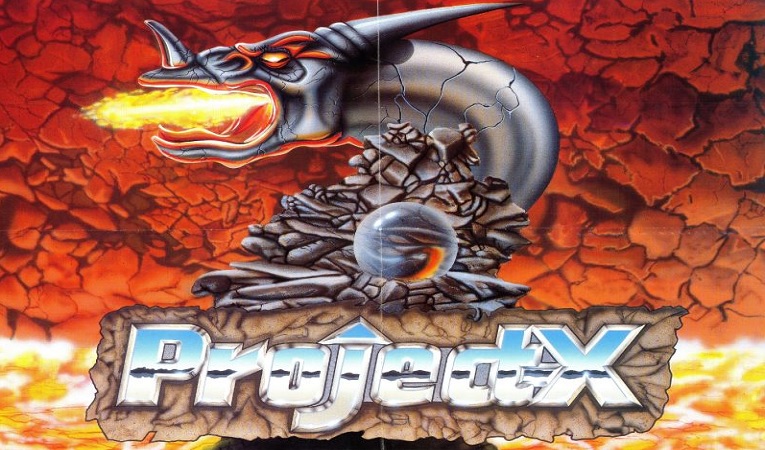
Some stupid scientists were messing around doing bio-mechanical experiments using some pretty powerful X-rays when they created some massive mutated insect-like droids. Of course, things don’t run true to plan – the insects not only survive but thrive. Their computer intelligence circuits are corrupted and they set off seeking revenge. You work for the space federation, and you’re assigned to deal with the mutant insects – surprise, surprise! Your mission is to fly to Ryxx, in the heart of the station where the evil insects have made their lair, and blow the whole thing sky high. Overall Project X is one of the finest, if not the finest shoot-’em-up available on the Amiga. It’s got mouth-watering graphics, and except for the bonus stages, all the graphics are in 32 colours. Sound-wise, your ears are going to take a real battering. It all kicks off with a brilliant rave tune, which pees all over the offerings from Oceanic and Altern 8.
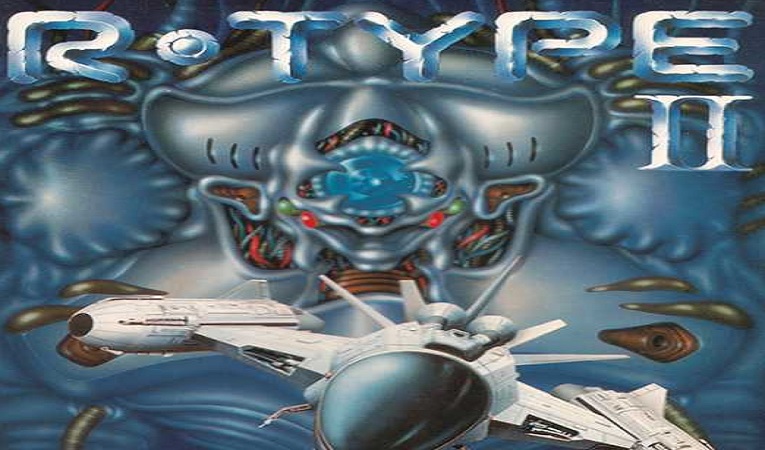
There are six levels of horizontal parallax scrolling action in R-Type II. All the great gadgets and gizmos are present. The all-protecting Force shield defends your ship both fore and aft. A wonderful feeling of invincibility surrounds you; the metallic killing machines which attempt to send you to an early bath are rendered powerless! Collecting the extra weapons and added extras is essential if one is to survive all the dreaded onslaughts of the evil Bydo Empire. A very difficult business as your foes are adept at sneaking behind and shooting your posterior. In order to combat this, pick up the bombs which can fire both front and back. Weapons beyond your wildest dreams, indeed. Missiles travel along like deadly ball bearings, or cascades of deadly energy. The most spectacular effects are the exocet-rockets, and the ring lasers (which crate a display of deadly red and blue lights!). The electric blue lasers which ricochet around the screen are a necessity for killing off those little aliens which lurk in dark corners. The secret of success is to pick up as many of these deadly items as possible.
news source: various sources / image source: Generationamiga

